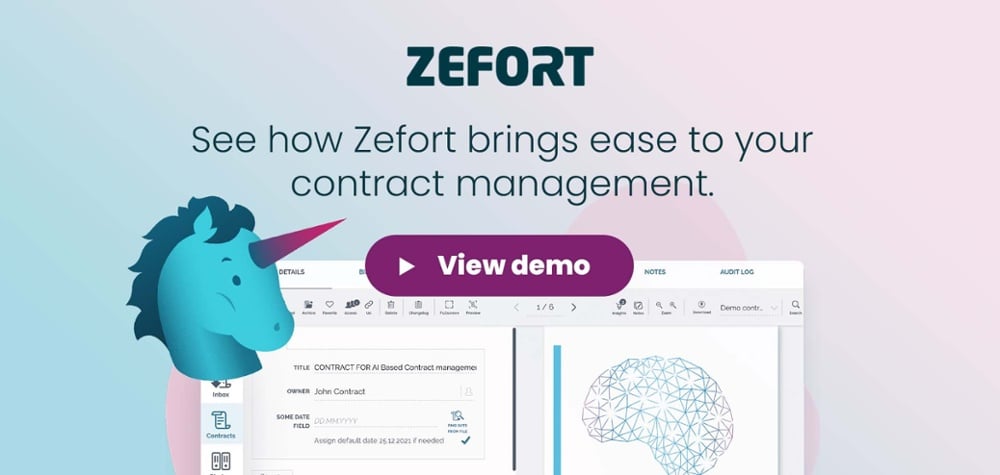How to Get Started with Contract Lifecycle Management – Three Low-Hanging Fruits
When you start looking into contract lifecycle management (CLM), you will quickly discover that there are many solutions with countless features available in the market. So many, in fact, that it gets very quickly confusing to understand which capabilities really drive the most value.
Added complexity increases the risks of delays and stone walls in your contract management project. So, instead of aiming for the moon from the get-go, start by picking the lowest-hanging fruits that provide you with immediate benefits.
Here’s our top 3:
1. Get all your contracts in one place
It’s not uncommon that contracts are spread across the organization. Some are stored in shared drives, some on personal laptops, some in various email inboxes and some contracts are just missing.
To make it easier to locate the needed contracts, you should not need to do detective work to know where to start looking. Everyone involved in your company should know where start when a contract is needed. Use modern contract repository for all your contracts.
2. Make it possible to ‘google’ your contract base
Sometimes you just know that your have written an identical contract cause that you need right now. You just don’t remember the exact contract where you wrote it – so you end up re-writing it to save time.
What if you could quickly “google” the clause, just by entering a couple of keywords in a search field?
In the 1990’s, metadata was essential in every content management system. If metadata was missing, it was practically impossible to find a particular document. Today, Google has taught us how easy it should be to find the needle in a haystack – quickly and easily.
An effective search feature that you definitely want to have in your contract management system.
3. Save contract-related emails in same location with your contract
Most contracts involve a lot of email discussion, both before and after the contract is signed. This includes interpretations on specific clauses, discussion on ordering options, changes to pricing or simply sending a notice of termination.
These emails are directly connected to the contract and its application. Having them only in individual persons’ inboxes is actually a significant risk for a company. What if you have to prove a termination of contract and the essential email is missing, for example?
Today, you should be able to save all of your contract-related emails in the same location as your contracts. What’s more, doing this should be easy to ensure that it actually gets done. And, having these emails discoverable with that Google-like search engine is bound to save you a lot of time.






